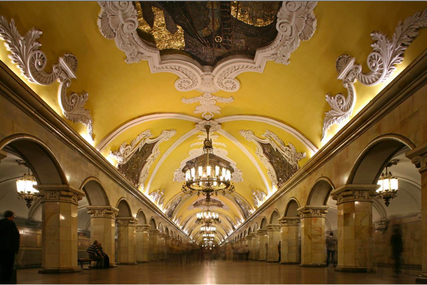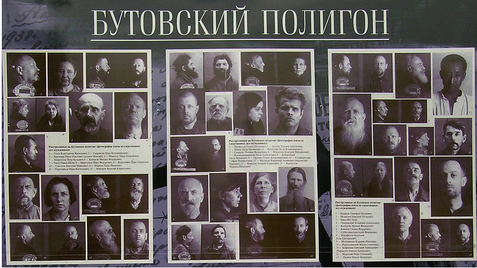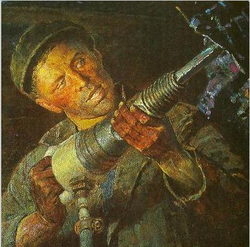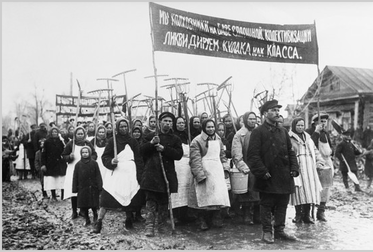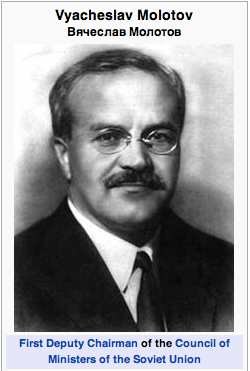Paper 2: Authoritarian and single party state leaders.
Stalin Vocabulary List Lynch M, (2005), Bolshevik and Stalinist Russia 1918-56, Hodder Murray: UK
Who was Stalin?
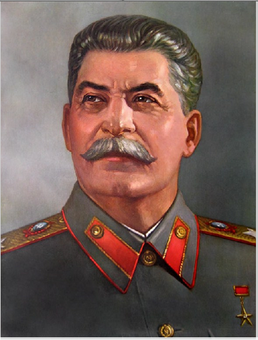
*Five five facts about Stalin before 1917 (1 about his childhood, 1 about his family, 1 about his education and youth and 2 about his political background before 1917)
*Check back to the notes you took about Stalin when you watched the Movie “Hitler and Stalin”. What notes did you take about Stalin before 1917?
*Create a poster on your table called ‘Who was Stalin’
*Add some pictures
Complete this reading for homework about Stalin’s political background and carry out the thinking routine Connect – Extend – Challenge
In class share your connections and extensions. Can you add any further information to your poster?
Make a list of challenges. Post them in the classroom and take them down as they get resolved.
How was Stalin able to succeed Lenin by 1929?
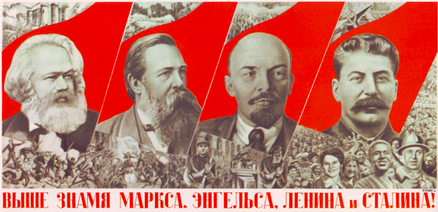
Here are some excellent resources to help you to understand how Stalin was able to succeed Lenin as the leader of the USSR
Stalin’s rise to power (2) by Michael Lynch
Stalin’s rise to power (SHP)
Stalin’s rise to power checklist
Stalin’s rise to power (2) by Michael Lynch
Stalin’s rise to power (SHP)
Stalin’s rise to power checklist
This article is by a famous historian of Russian history, Robert Service:
Stalin’s rise to power
Stalin’s rise to power
Hist0riography
The link below give access to an excellent website with a clear summary of historiography about Stalin’s rise to power and the Historians associated with it:
http://www.adjunkten.com/Historical%20interpretations%20of%20Stalinism.htm
http://www.guardian.co.uk/world/2009/jul/13/russia-shuts-history-website
http://www.adjunkten.com/Historical%20interpretations%20of%20Stalinism.htmExcellent link for all Soviet History:
http://www.soviethistory.org/index.phpThis article comes from History Today and compares both Stalin and Mao:
Comparing Stalin & Mao
http://www.adjunkten.com/Historical%20interpretations%20of%20Stalinism.htm
http://www.guardian.co.uk/world/2009/jul/13/russia-shuts-history-website
http://www.adjunkten.com/Historical%20interpretations%20of%20Stalinism.htmExcellent link for all Soviet History:
http://www.soviethistory.org/index.phpThis article comes from History Today and compares both Stalin and Mao:
Comparing Stalin & Mao
Stalin’s IdeologyStalin was a left wing leader of a single party state whose ideology was based on communism. What was unique about his interpretation of communist principles?
Stalin’s ideology |
Stalin’s Consolidation of Power 1929 – 1939: The Great Terror
Everybody in the photo above was a victim of the Great Purge.
These extracts are from Corin, C and Fiehn, T (2011). Russia under Tsarsim and communism 1881 – 1953. London: Hodder Education.
Introduction to the Purges
The purges
Cult of Personality
Stalin v Tsar
This link has a clear explanation of the purges:
http://www.bbc.co.uk/schools/gcsebitesize/history/mwh/russia/stalinpurgesandpraisesrev1.shtml
Introduction to the Purges
The purges
Cult of Personality
Stalin v Tsar
This link has a clear explanation of the purges:
http://www.bbc.co.uk/schools/gcsebitesize/history/mwh/russia/stalinpurgesandpraisesrev1.shtml
This extract is from Todd A and Waller S, (2011) Authoritarian and Single- Party States, UK: Cambridge;
Purges and Consolidation of Power
Purges and Consolidation of Power
Questions to consider:
* Why did Stalin carry out the purges?
* Who were the victims?
* To what extent was Stalin’s personality to blame for the purges?
* How long did the purges last and did they change characteristics during that time?
* Why did Stalin carry out the purges?
* Who were the victims?
* To what extent was Stalin’s personality to blame for the purges?
* How long did the purges last and did they change characteristics during that time?
How successful was Stalin’s economic policy?
The picture opposite is of Alexei Stakhanov. Who was he and what was his significance in Stalin’s Russia?What was the policy of giganticism? See the pictures of the Moscow metro below:
http://www.beeflowers.com/moscowmetro/index.htmStalin’s industrial policy is explained here:
Success and failure in industry
Stalin’s industrial policy – by Micheal Lynch
The article below is from The Telegraph newspaper and is about a railway built by prisoners from Stalin’s gulags:
http://www.bbc.co.uk/news/magazine-18116112What methods did Stalin use to industrialise the USSR?
http://www.beeflowers.com/moscowmetro/index.htmStalin’s industrial policy is explained here:
Success and failure in industry
Stalin’s industrial policy – by Micheal Lynch
The article below is from The Telegraph newspaper and is about a railway built by prisoners from Stalin’s gulags:
http://www.bbc.co.uk/news/magazine-18116112What methods did Stalin use to industrialise the USSR?
What were the consequences of the programme of collectivization?
Stalin’s programme of Collectivisation:
Stalin and Collectivisation
Collectivisation – Michael Lynch
What were the human and economic consequences of collectivization and what are the different responses of the Historians to collectivization?For the Historical debate this extract is helpful:
Stalin and Collectivisation (Allan Todd and Sally Waller)
A Soviet photograph of a pro-collectivisation demonstration in 1930. The banner reads ‘We demand collectivisation’ and ‘Liquidate the Kulaks as a class’.
Stalin and Collectivisation
Collectivisation – Michael Lynch
What were the human and economic consequences of collectivization and what are the different responses of the Historians to collectivization?For the Historical debate this extract is helpful:
Stalin and Collectivisation (Allan Todd and Sally Waller)
A Soviet photograph of a pro-collectivisation demonstration in 1930. The banner reads ‘We demand collectivisation’ and ‘Liquidate the Kulaks as a class’.
Your Task:
Discover
1. In your groups COLLABORATE to fill a discovery board with information about Stalin’s social policy between 1928 and 1939. You have 2 lessons.
Step1: What do we need to know? Write at least 15 factual questions and 3 conceptual questions.
Step 2: Find out the answers and post them in the classroom.
Step 3: Give feedback to each other’s work. Fix up the information based on the feedback you have received.
Define the problem:
Conduct an interview to discuss Stalin’s social and economic policies. Write a to what extent question.
Brainstorm
Brainstorm the answers to the question.
Conduct further research to ensure the answer is accurate.
Protoype
Write an answer to the question in the form of an essay
Evolve the product
Finalise the product
What were the key features of Stalin’s social policy?
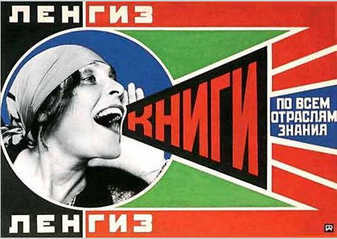
How did Stalin maintain his power?
http://wis2008.wikispaces.com/How+Did+Stalin+Maintain+Power%3FThis extract is from Todd A and Waller S, (2011) Authoritarian and Single- Party States, UK: Cambridge;
http://wis2008.wikispaces.com/How+Did+Stalin+Maintain+Power%3FThis extract is from Todd A and Waller S, (2011) Authoritarian and Single- Party States, UK: Cambridge;
Past paper question:
To what extent did Stalin’s social policy solve the problems that he faced?
How did Stalin create and maintain a totalitarian state?
Work in pairs. (a) Summarise the arguments of the pluralist group and the totalitarian group by making two charts. (b) How valid is the claim that Stalin was just the front man for the bureaucratic elite that began to emerge after 1917. You must support your argument with specific details / events / names of Historians.
Totalitarianism
Stalin created a Cult of Personality to portray him as ‘Lenin’s Rightful Heir’, ‘The Father of the Nation’ and the ‘Saviour of the Motherland’. Find examples of posters, statues or art works to support each of these things. Were these propaganda techniques effective and why?
Totalitarianism
Stalin created a Cult of Personality to portray him as ‘Lenin’s Rightful Heir’, ‘The Father of the Nation’ and the ‘Saviour of the Motherland’. Find examples of posters, statues or art works to support each of these things. Were these propaganda techniques effective and why?
What opposition existed to Stalin?
After the Civil war the Bolshevik Party was the only legal party in the USSR. Most opposition ha been removed. Opposition to Stalin really only came from within the Party e.g. Trotsky and his supporters, other rivals for power.
- Kulaks
- Supporters of the NEP e.g Bukharin
- Supposed threats to power e.g. Kirov
What methods were used to remove opposition? Consider – propaganda, cult of personality, purges, show trials, NKVD, Gulag, manipulation of the Party Congress attendance, use of position as Membership Secretary, The Great Turn (against the NEP), Socialism in One Country, exiling of enemies eg Trotsky, aligning himself with Lenin.
How successful was Stalin at removing opposition?
Stalin’s Foreign Policy
In 1917 the USSR was isolated in Europe and beyond. Many countries refused to recognise the new Bolshevik government. In 1945 the Soviet Union was hailed as a saviour as it defeated the Nazis. How did Stalin’s foreign policy move the USSR from pariah to saviour?Stalin balanced these three broad aims in his foreign policy:
1. Desire to spread revolution
2. Establishment of working relationship with world powers
3. Defence of Soviet interestsThe document below outlines the factors that determined Stalin’s foreign policy:
Stalin’s foreign policy
1. Desire to spread revolution
2. Establishment of working relationship with world powers
3. Defence of Soviet interestsThe document below outlines the factors that determined Stalin’s foreign policy:
Stalin’s foreign policy

